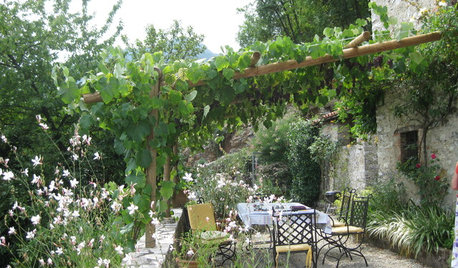Hi all, first time for me on the Rhodo forum. I noticed this past year that two Rhodos on my property attract an unbelieveable amount of wasps over the summer. One is a real old variety at least 50 years and about 12' tall, nice pale pink flowers the other is a newer variety maybe 10 years old and huge clusters of vibrant pink flowers. The old one is in front of my house and the other is near a pool area (luckily no kids to worry about getting stung here) I've planted others far away from the house, but I'm really worried about the wasps, is there something I can spray on the plants to discourage them without harming the plants? There were literally hundreds of wasps on the smaller one and there was no nest to be found, even had an exterminator out to check, they were paper wasps and they were feeding on something on the rhodo. UGH, help, I really don't want to remove them but I found them by spraying the plants with a hose and the wasps rose in a cloud, most flew in the opposite direction, but I narrowly escaped getting stung. Sorry for such a long post here. Basic question, do you know of a spray that will keep the wasps away and not harm the Rhodo's or should I just have them removed?








morz8 - Washington Coast
chazparasOriginal Author
Related Professionals
Edmond Landscape Contractors · Avocado Heights Landscape Contractors · Broomfield Landscape Contractors · Fuquay-Varina Landscape Contractors · Long Beach Landscape Contractors · Lynwood Landscape Contractors · San Pedro Landscape Contractors · Santa Maria Landscape Contractors · Soddy Daisy Landscape Contractors · Suitland Landscape Contractors · Tacoma Landscape Contractors · Tamarac Landscape Contractors · Tustin Landscape Contractors · Greenfield Landscape Contractors · Casselberry Landscape Contractorsmorz8 - Washington Coast
chazparasOriginal Author
rhodyman
chazparasOriginal Author
rhizo_1 (North AL) zone 7
chazparasOriginal Author
HU-828975985